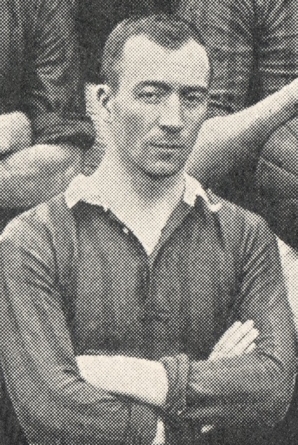
Sunderland Association Football Club is a professional football club based in the city of Sunderland, Tyne and Wear, England. The club competes in the Championship, the second tier of English football.

The Stadium of Light is an all-seater football stadium in Sunderland, England, and the eighth and current home to Sunderland A.F.C. With space for 49,000 spectators, the Stadium of Light is the ninth largest football stadium in England. The stadium primarily hosts Sunderland A.F.C. home matches. The stadium was named by chairman Bob Murray to reflect the coal mining heritage of the North East and the former Monkwearmouth Colliery site on which it stands. A Davy lamp monument stands at the entrance to reflect the coal mining industry that brought prosperity to the town.
George Mulhall was a Scottish football player and manager. Born in Falkirk, Mulhall played as an outside left for Aberdeen and Sunderland. He was capped three times for Scotland. He became the manager of Bradford City, Bolton Wanderers and Halifax Town.
James "Hookey" or "Hooky" Leonard (1906–1959) was a Scottish professional footballer.
James Richardson was a professional footballer and manager, who played for Third Lanark, Huddersfield Town, Sunderland, Ayr United and Millwall.
Colin West is an English former footballer. He played as a forward and scored 158 goals in 555 league and cup games in the English Football League, Conference and the Scottish Football League.

Newcastle Road was a football ground in the Monkwearmouth area of Sunderland, England, and was the home ground of Sunderland A.F.C for twelve years, between 1886 and 1898. It was the sixth ground at which the club had played. Also called Ashville Ground, it was located between Newcastle Road, Eglinton Street North and Crozier Street. Sunderland AFC's first game at the ground was a friendly against Birtley on 10 April 1886. The game ended as a 3 – 3 draw. On 5 May 1888, the now-defunct Sunderland Albion F.C. played their inaugural game at Newcastle Road; a 3 – 0 victory over Shankhouse Blackwatch, although Albion would go on to play their home games at Sunderland AFCs previous ground of Blue House Field.
Adam McLean was a Scottish footballer, who played for Celtic, Sunderland, Aberdeen, and Partick Thistle. An outside-left, he was an integral part of the Celtic team of the 1920s. He provided many assists to Jimmy McGrory, the greatest British goalscorer of all time. In August 1928, after a dispute over terms, he departed Celtic Park with a great amount of hesitation for Sunderland before returning north again with Aberdeen. During the 1933 close season he was transferred to Partick Thistle.
William Murray was a football player and manager for Sunderland. He also played for Scottish League clubs Cowdenbeath and St Mirren.
George Collin was an English footballer who played at left-back.

James Milburn Hartley was a Scottish professional footballer who played as an inside forward, most notably in the Football League for Lincoln City.
Joseph Henry Butler was an English professional football goalkeeper who made 457 appearances in the Football League for Stockport County, Clapton Orient, Glossop, Sunderland and Lincoln City. With Sunderland, he won the 1912–13 First Division title and played on the losing side in the 1913 FA Cup Final.
Trevor Swinburne is an English retired professional football goalkeeper who made nearly 250 appearances in the Football League for Carlisle United.
David Main (1888–1961) was a Scottish professional footballer who played as a forward for Sunderland.
Horatio Street was a football ground in the Roker area of Sunderland. It was the fourth home of Sunderland A.F.C., hosting the club between 1883 and 1884.
Groves Field was a football ground in the Ashbrooke area of Sunderland, England. It was the third home of Sunderland A.F.C, hosting the club between 1882 and 1883, and was Sunderland's last home South of the River Wear.
Blue House Field was a football ground in the Hendon area of Sunderland, England. It was the original home of Sunderland A.F.C hosting the club between 1880 and 1881. It hosted rivals Sunderland Albion F.C. between 1888 and 1892. While the home of Sunderland Albion, Blue House Field hosted matches in the Football Alliance and the FA Cup.
The 1890–91 season was Sunderland's 11th season in existence, and their first season as a Football League club. Sunderland were elected into the league for the beginning of its third season, in place of Stoke City who had finished bottom in 1889–90.



